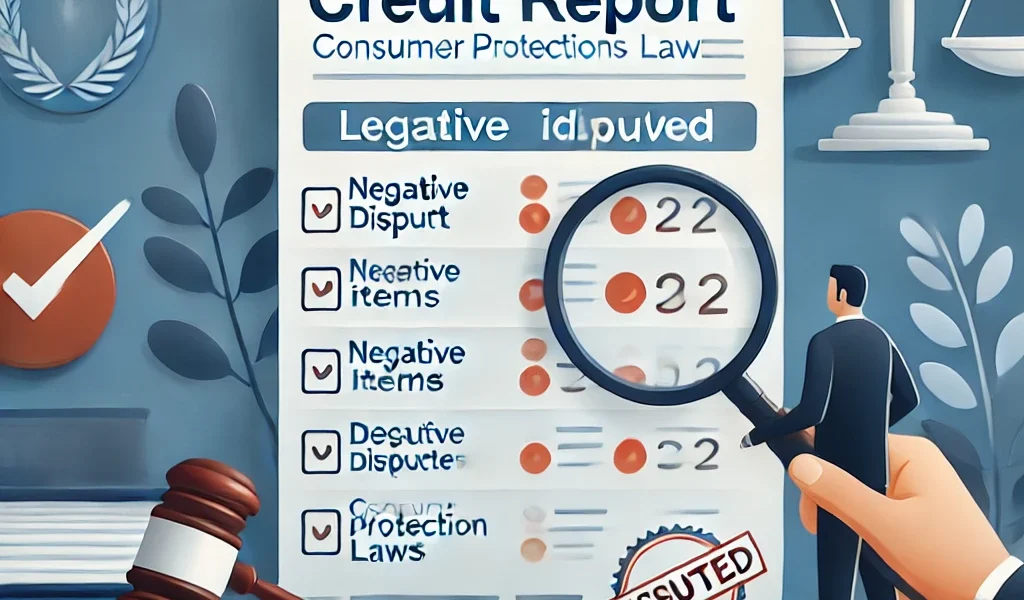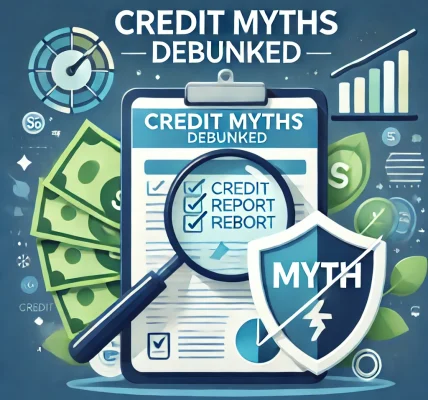Negative items on your credit report can significantly impact your financial health, affecting your ability to secure loans, credit cards, and even housing. However, many people wonder whether they can legally remove these negative items and improve their credit score. This guide will help you understand the process of legally disputing and removing negative items from your credit report while ensuring compliance with financial laws.
Understanding Negative Items on a Credit Report
Negative items are records of late payments, defaults, charge-offs, bankruptcies, and other financial missteps that appear on your credit report. These items lower your credit score and can stay on your report for years, affecting your financial opportunities.
Types of Negative Items
- Late Payments – Reported when a payment is overdue by 30 days or more.
- Charge-Offs – When a creditor writes off a debt as uncollectible, but it remains on your report.
- Collections – Unpaid debts that are sent to a collection agency.
- Bankruptcies – Legal declarations of an inability to repay debts, staying on a report for up to 10 years.
- Foreclosures – Losing property due to failure to pay a mortgage.
- Repossessions – Losing assets, such as cars, due to unpaid loans.
- Judgments – Court rulings requiring you to pay a debt.
Can You Legally Remove Negative Items from Your Credit Report?
Yes, but only under specific circumstances. Removing negative items from your credit report is legal if:
- The information is inaccurate or outdated.
- The creditor fails to verify the debt.
- You negotiate a pay-for-delete agreement (in limited cases).
Step-by-Step Process to Dispute and Remove Negative Items
Step 1: Obtain and Review Your Credit Report
You are entitled to a free credit report from each of the three major credit bureaus (Equifax, Experian, and TransUnion) once a year via AnnualCreditReport.com. Review your report for errors, outdated information, or fraudulent accounts.
Step 2: Identify Errors and Collect Evidence
Check for:
- Incorrect late payments.
- Accounts that do not belong to you.
- Duplicate negative items.
- Incorrect balances or statuses.
If you find errors, gather supporting documents such as payment records, bank statements, or correspondence with creditors.
Step 3: File a Dispute with Credit Bureaus
You can dispute errors online, by mail, or by phone with each credit bureau. Provide a detailed explanation and supporting evidence.
- Online: Visit the dispute section of each credit bureau’s website.
- Mail: Send a written dispute letter with copies of supporting documents.
- Phone: Call the credit bureau’s customer service line.
Credit bureaus must investigate disputes within 30 days under the Fair Credit Reporting Act (FCRA). If the information cannot be verified, it must be removed.
Step 4: Contact the Creditor Directly
If the credit bureau does not remove an item, reach out to the original creditor. Request verification of the debt or negotiate a resolution.
Step 5: Consider Goodwill Letters for Legitimate Negative Items
A goodwill letter is a formal request to a creditor, asking them to remove a late payment or other negative item as a gesture of goodwill. This works best if:
- You have a history of on-time payments.
- The negative item was due to a one-time error.
Step 6: Negotiate a Pay-for-Delete Agreement (Limited Effectiveness)
Some collection agencies may agree to remove a collection account if you settle the debt. However, this is not always effective, as major credit bureaus discourage this practice.
Step 7: Wait for Automatic Removal of Expired Negative Items
Negative items naturally drop off your credit report after a set period:
- Late payments – 7 years.
- Collections – 7 years.
- Charge-offs – 7 years.
- Bankruptcies – 7 to 10 years.
- Foreclosures – 7 years.
- Judgments – 7 years (or longer if unpaid).
Step 8: Work with a Credit Repair Professional (If Needed)
If you are struggling to remove negative items, consider consulting a legitimate credit repair company. Avoid scams that promise overnight results or require large upfront fees.
Legal Protections Under Credit Laws
Several laws protect consumers from unfair credit reporting practices:
Fair Credit Reporting Act (FCRA)
- Gives you the right to dispute inaccurate information.
- Requires credit bureaus to investigate disputes within 30 days.
- Limits how long negative items stay on your report.
Fair Debt Collection Practices Act (FDCPA)
- Protects against abusive debt collection practices.
- Allows you to request written validation of a debt.
- Enables you to dispute incorrect collection accounts.
Credit Repair Organizations Act (CROA)
- Protects consumers from fraudulent credit repair companies.
- Prohibits misleading claims about credit score improvement.
- Requires contracts in writing with a three-day cancellation period.
How to Improve Your Credit Score After Removing Negative Items
Once you successfully remove negative items, follow these strategies to build a strong credit profile:
1. Pay Bills on Time
Late payments hurt your score the most. Set up automatic payments or reminders to ensure timely payments.
2. Reduce Credit Utilization
Keep your credit utilization ratio below 30% to show responsible credit usage.
3. Build a Positive Credit History
Open new credit accounts responsibly, use them wisely, and maintain a mix of credit types.
4. Monitor Your Credit Regularly
Use free credit monitoring services to track changes and catch errors early.
5. Avoid Hard Inquiries
Limit applications for new credit cards or loans to prevent unnecessary hard inquiries on your report.
Final Thoughts
Yes, you can legally remove negative items from your credit report—if they are inaccurate, outdated, or unverifiable. However, legitimate negative items will remain on your report until they expire. Understanding your rights under credit laws and taking proactive steps to maintain a healthy credit profile will help you secure better financial opportunities in the future.
Key Takeaways:
✅ You can dispute errors and outdated negative items for removal. ✅ The FCRA requires credit bureaus to investigate disputes within 30 days. ✅ Goodwill letters and pay-for-delete agreements may work in limited cases. ✅ Negative items drop off automatically after 7-10 years. ✅ Improving credit habits ensures long-term financial success.
By following these legal steps, you can take control of your credit and work toward a better financial future.




